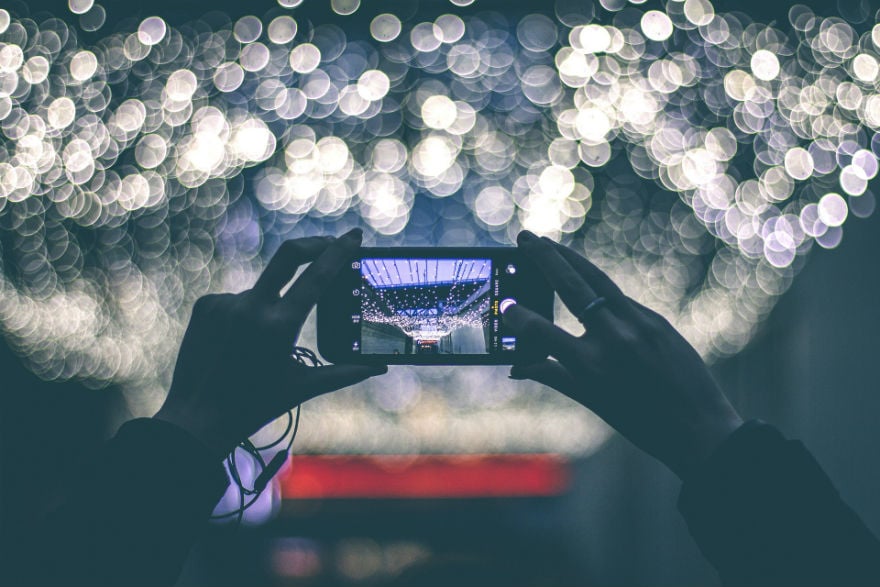You don’t need to be Patti Smith or Annie Leibovitz to take amazing photos, even with a smartphone. But when it comes to your product photos, RepricerExpress knows you’ve got to have a few skills under your belt to make ‘em look snazzy and sharp. Read on to discover tricks you might not have been aware of.
But before we get into our tips, just a quick word of advice to repeat to yourself when you read each one: smartphones aren’t built to the same level of quality as ‘real’ cameras, so you will have to put a bit more effort into getting good pictures. It’s far from impossible, but you’ll have to develop your side of things as opposed to letting the camera do the bulk of the work.
It’s All about the Lighting
Forget for a minute about the fact that you’re shooting with a smartphone — any decent photographer will tell you that the key to good photographs has a ton to do with lighting. Use natural light as much possible, with a slightly overcast day offering almost ideal conditions (really bright sun can tend to wash out colours and add shadows). While you will have to adjust for the slightly decreased brightness by using a slower shutter speed, wider aperture and/or higher ISO, the benefits are fantastic (i.e. colours that really pop, next-to-no shadows, more flattering light, and easier to take a tricky subject and make it look good).
Depending on the shooting space and how much natural light there is, you might have to add in some side lighting, like the kind you see in professional model shots. Rent these lights so you don’t have to commit to spending oodles of money on a one-shot deal.
A Neutral Background is Your Best Friend
Occasionally, you can get away with shooting an object on a not-neutral background, but that pretty much only happens in, like, 2% of cases. For the most part, you’ll want to stick to a background that’s something like white, tan, beige, taupe or light grey. The idea is you want to make your background as bland as possible so it doesn’t compete at all with the item being photographed.
But wait, there’s more! You may be tempted to use your wall as the background, but don’t. Even though it make look ideally bland to your eye, your smartphone will pick up on imperfections that you can’t see. Grab a neutral-toned sheet or roll of paper and set up shop that way. Copy the setup that pro photographers do by taping/pinning the sheet/roll to the ceiling, bring it to where it meets the wall, let it drape down the wall, and create a little carpet with it. This way, the to-be-shot item is completely enveloped by the background and everything is as even as possible.
Swap out Your Hands for a Tripod
As skilled as you may think you are at grabbing fast shots on the go with your smartphone, this is one time to temporarily cease that habit. A tripod will hold your smartphone absolutely steady, reducing shakes that can blur and ‘noise-ify’ your images. A decent tripod isn’t the cheapest piece of equipment (but it’s not overly expensive either), but it definitely is something you should invest in.
Don’t be Afraid to Play around with Angles
When you look at an object, you’re seeing it in 3D, in context, and in its entirety within its environment. But when your smartphone ‘looks’ at an object, it’s seeing it in a totally different way: flat, 2D, and on a sort of grid-like system.
f you haven’t trained your own eyes to see objects the way a camera has, that’s okay! This is when you get your smartphone to tell you exactly what’s going on. Take plenty of shots from different angles, and absorb how each one looks on a screen. Some of the main angles you’ll want to stick to are: head on, profile (both left and right if there’s something different going on on each side), from behind, front-from-an-angle and almost-profile-but-tilted. Play around with them to see what works.
Final Words of Advice
We have just two last little tidbits:
- 1. Work with a bunch of camera apps to see which one feels most intuitive and efficient for you and your purposes. There are a ton out there, but not every one has the same snuggly fit for every smartphone photographer.
- 2. Don’t forget about editing. Do things like PhotoShop the shadows away; alter the brightness/contrast/exposure levels; and crop, resize or re-align the image.
While we could go on forever, talking about how to transform your smartphone into a magically handy device, it’d take away from something else of equal importance: using RepricerExpress to take advantage of the boost in sales once consumers see your pretty new photos. But — to get there, you’ll have to first sign up for your 15-day free trial. Happy shooting and repricing!
Subscribe to our newsletter for pro tips for selling on Amazon.





